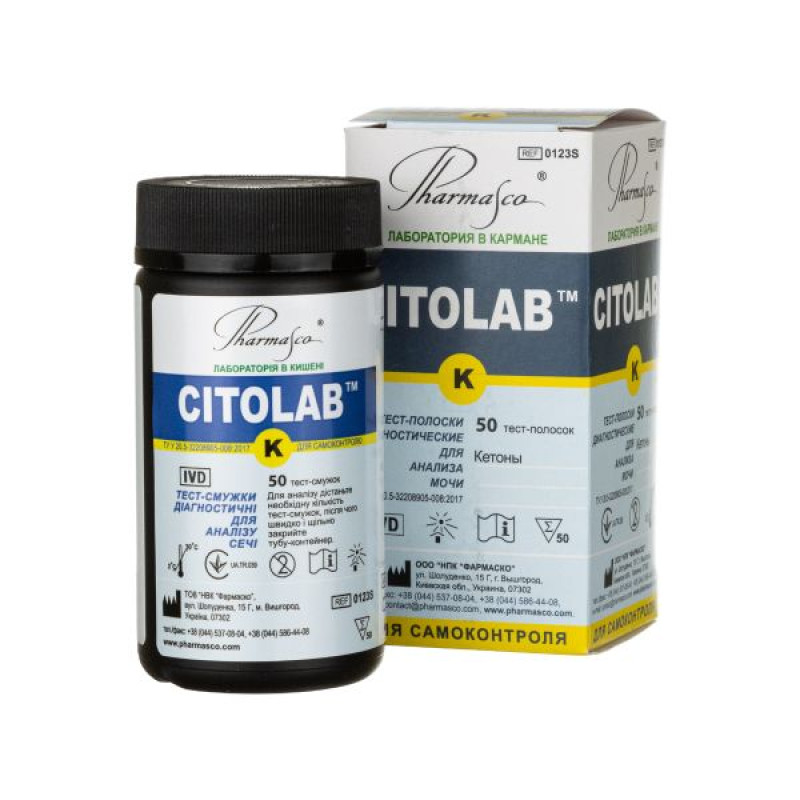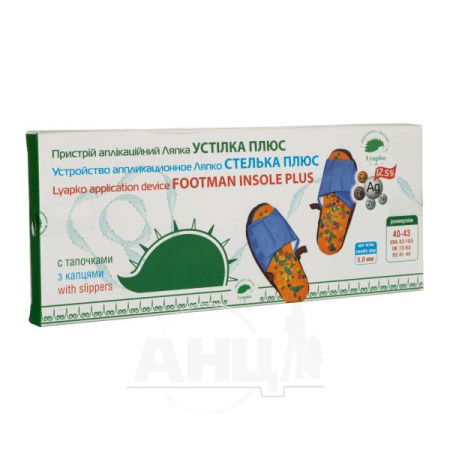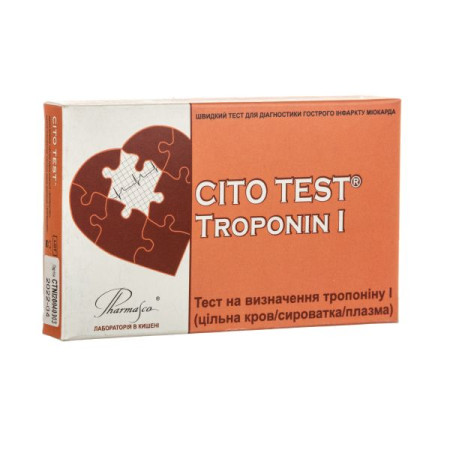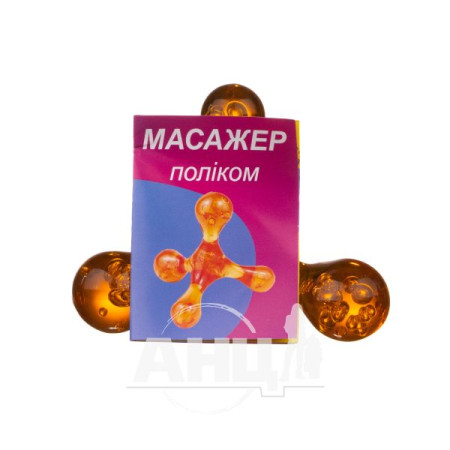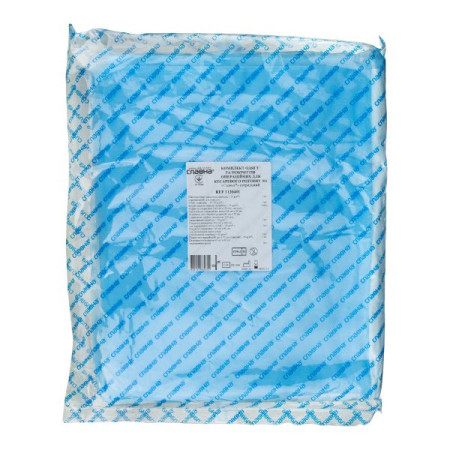Citolab 2GK test strip for glucose and ketones No. 50
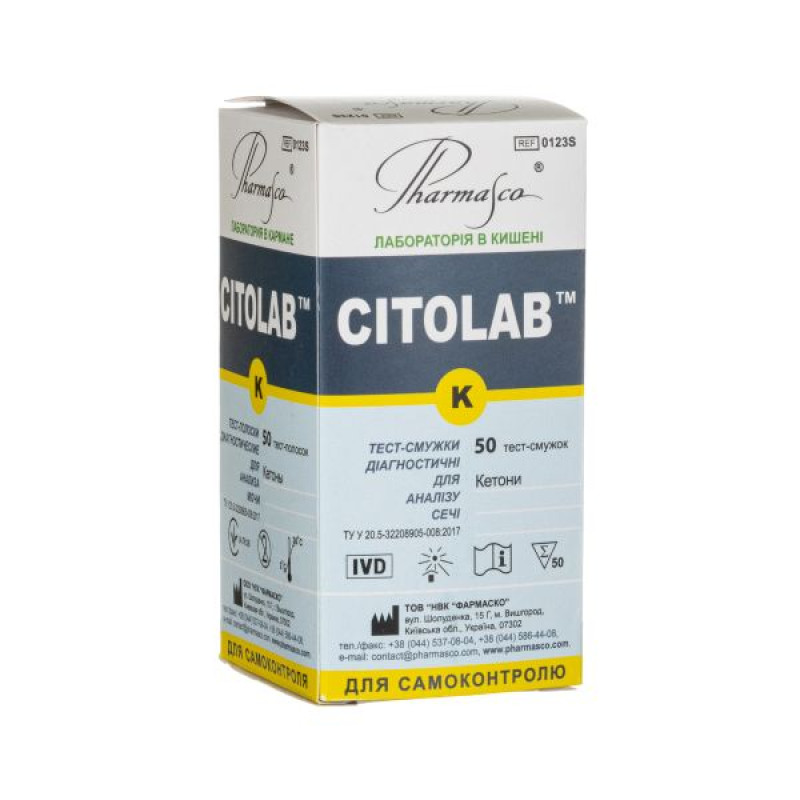
CITOLAB 2GK test strips for determining the level of glucose and ketones in urine are intended for self-monitoring.
CITOLAB 2GK delivery set:
50 test strips and a desiccant in a container Instructions in UkrainianTesting procedure
To obtain correct results, the testing procedure must be followed:
Remove the strip from the container and close the lid. Inspect the strip. The test strip is invalid if the test zone is discolored or darkened. Immerse the strip with the test zone in the urine for no more than 2 seconds. Run the edge of the strip along the edge of the container to remove any remaining urine, making sure that the test zone does not touch the edge of the container. Holding the strip horizontally, blot it with an absorbent material to completely remove any remaining urine. Excess urine can cause the reagents to interact with adjacent zones on the test strip and give incorrect test results. Interpret the test results after 60 seconds under intense light by comparing them with the color scale on the container. When recording the results, the strip should be held horizontally to avoid interaction of the reagents of adjacent zones of the test zone in the event of urine leakage.Reagent zones and principle of testing for glucose and ketones:
Glucose/Principle: Glucooxidase catalyzes the oxidation of glucose to form hydrogen peroxide, which, with the help of peroxidase, then oxidizes the chromogen of the reagent zone.
Reagents: glucooxidase 430 Units; peroxidase 200 Units; potassium iodide 12 mg.
Threshold level: 50 mg/dL glucose.
Expected results: Normally, glucose is not detected in the urine, although small amounts may still be excreted in the urine. An X-ray can detect glucose at a concentration of about 50 mg/dL. A glucose concentration of 100 mg/dL is considered abnormal.
Limitations of the method: The reagent zone does not react with lactose, galactose, fructose and drug metabolites (salicylates and nalidixic acid). Urine samples with a specific gravity greater than 1.020, elevated pH and ascorbic acid levels greater than 40 mg/dL may show a false negative result. The sensitivity of the test is affected by increased urine volume, ketones and room temperature.
Ketones/Principle: Lechal reaction with nitroprusside. Acetoacetic acid reacts with sodium nitroprusside in an alkaline medium, and the color of the zone changes from beige to purple.
Reagents: sodium nitroprusside 23.0 mg.
Threshold level: 5 mg/dL (acetoacetic acid).
Expected results: normally, in the absence of pathology, ketone bodies should not be detected in the urine.
Limitations of the method
Ketone bodies can appear in the urine as a result of physiological stress (therapeutic fasting, pregnancy, significant physical exertion), as well as in ketoacidosis, disorders of carbohydrate and lipid metabolism.
Elevated urinary ketone levels may appear earlier than elevated serum ketone levels.
False positive results may occur in urine samples with high specific gravity and low pH, in the presence of phenolsulfonphthalein, and in cases of marked urine pigmentation or significant levels of levodopa metabolites.
Quality control
Confirmation of test strip performance can be performed on known positive and negative samples or a control when the container is first opened. Each laboratory should establish its own control standards in accordance with national requirements.
Characteristics of CITOLAB 2 GK test strips
Performance characteristics are based on clinical and analytical data and are presented in a section dedicated to each assay.
Efficiency depends on several factors
Variability in color perception Presence or absence of major interfering and commonly encountered urine components Laboratory environment in which the test is performed (e.g., lighting, temperature, and humidity).How to use
Collect the urine sample in a clean, dry container so that all reagent areas of the test strip are submerged. Do not add preservatives to the sample.
Use the urine as soon as possible after collection, mixing it well beforehand. Do not centrifuge the sample.
If testing cannot be performed immediately after sample collection, it should be stored in the refrigerator, but not in the freezer, and then brought to room temperature immediately before testing.
Precautions
For professional in vivo diagnostics only Do not remove the desiccant from the strip container Do not open the container or remove the strips immediately before testing Do not use if the integrity of the container is compromised Keep out of reach of children Test strips are intended for urine testing only and should not be used for testing other body fluids. The area of use should be clean, free from detergents and other chemicals.Storage conditions
After obtaining the required number of strips, the container should be closed immediately and the lid should be screwed tightly. Store in a cool, dry place at a temperature of 2°C to 30°C, tightly closed, do not freeze. Avoid moisture and direct sunlight. Do not use after the expiration date.There are no reviews for this product.
There are no reviews for this product, be the first to leave your review.
No questions about this product, be the first and ask your question.



